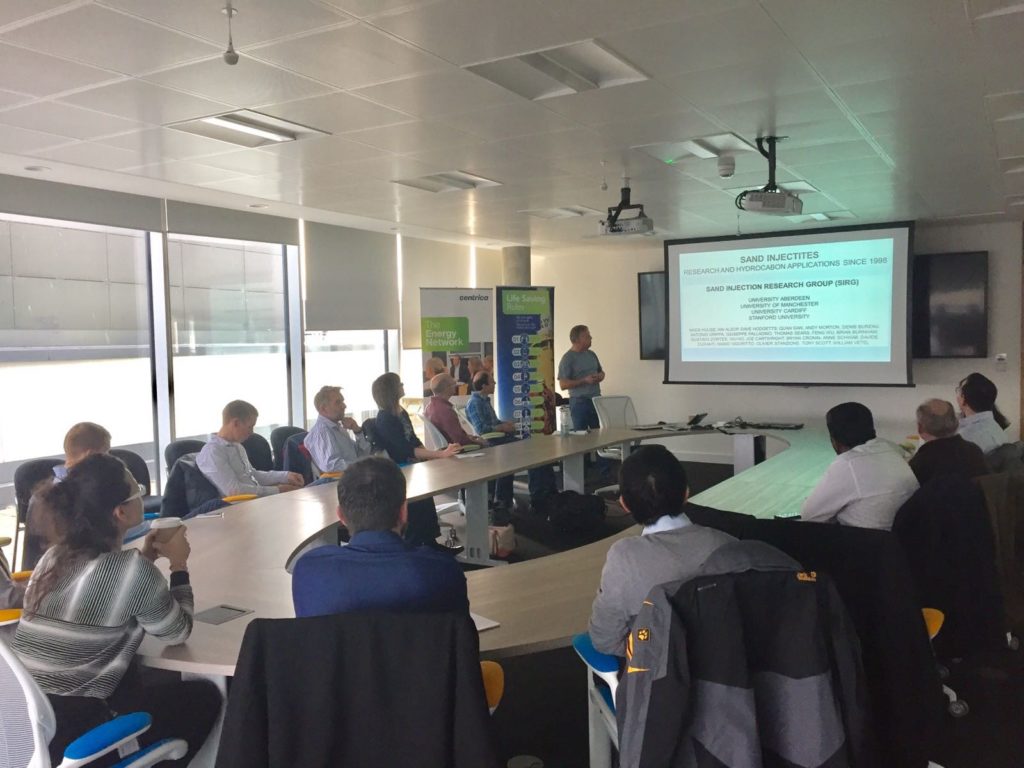YP Seminar Review – Sand Injectites: What Are We Missing?
YP Seminar Review – Sand Injectites: What Are We Missing?
By Andrew Miles,
The PESGB YPs – Aberdeen recently welcomed Professor Andrew Hurst from the University of Aberdeen to present a talk on sand injectites. Andrew started by highlighting the significance of injected reservoirs in the North Sea, outlining those fields which have been in production for many years (Gryphon, Alba and Harding), and those currently being developed across the basin (notably Premier’s Catcher, Statoil’s Mariner and Enquest’s Kraken projects).
As this latest round of major developments near production, it is clear that injected reservoirs are continuing to attract considerable interest from exploration teams across the basin. It was refreshing to hear that companies are continuing to sponsor, and engage with, academic research groups in these challenging times. Andrew, alongside his academic colleagues from across the UK, and an army of past and present research students, have been at the forefront of this research. It was immediately clear how our understanding of these reservoirs has progressed enormously in the past twenty years.
Andrew presented the latest understanding of how the sands (typically deposited in deep water turbidite systems) are injected into the host formations, and the sedimentary architecture one can expect in a typical injectite complex. An impressive labyrinth of dykes and sills ensures connectivity across the system, from the shallowest extrudites down to the depositional parent bodies.
Injected reservoirs are unique in that they were first discovered in the subsurface, and outcrop analogue studies have been playing catch-up ever since. A great deal of fieldwork has now been completed, predominantly in California, and the examples presented by Andrew were stunning. Whole injectite complexes can be viewed on a reservoir scale, with geologists able to walk along the pathways of sand from one geobody to the next. Examples were shown of the internal complexity of these reservoirs, including intricate relationships between clasts of host rock within injected sand bodies; it is no wonder describing these systems in core can be so difficult.
Injected reservoirs have unique drilling challenges, and it was interesting to see how the engineering has evolved. Examples were presented from the early days of the Volund field in Norway, where Marathon Oil first had the courage to drill into a suspected injectite wing. Today, companies are able to navigate through these thin corridors of pay with impressive accuracy thanks to the use of the latest deep resistivity tools. Premier Oil, for example, has been able to use this technology to great effect on their recent Catcher drilling campaign.
A short Q&A session followed, with topics of discussion ranging from geomechanics to sand-box modelling. Special thanks go to Andrew for an excellent presentation, the YP committee for organising another great event, and to Centrica for hosting the seminar.

